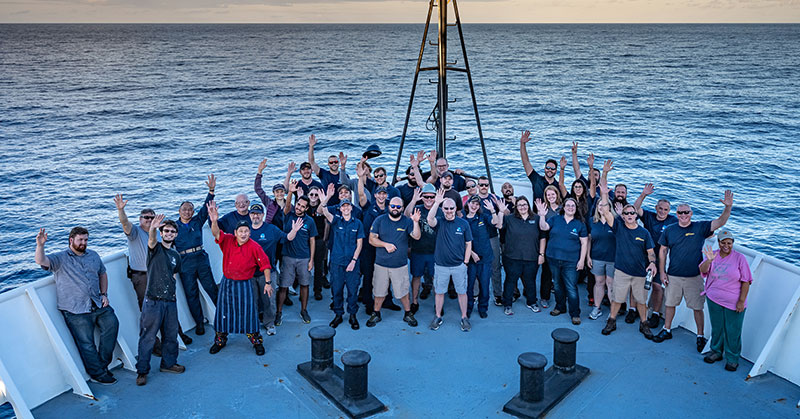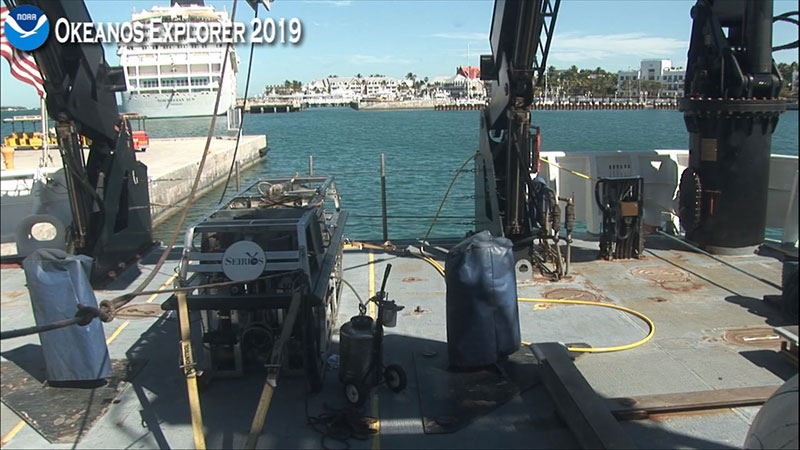
Date: November 20, 2019
Location: Lat: 24.5611°, Long: -81.8013°

The mission team and crew gathered for a group photo during the 2019 Southeastern U.S. Deep-sea Exploration. Image courtesy of Art Howard, Global Foundation for Ocean Exploration, NOAA Office of Ocean Exploration and Research, 2019 Southeastern U.S. Deep-sea Exploration. Download image (jpg, 4.7 MB).
Today marks the last day of the 2019 Southeastern U.S. Deep-sea Exploration. Despite the challenges posed by the weather, the waves, and the ever-present Gulf Stream, the expedition was undoubtedly a success. We conducted 12 dives in support of general ocean exploration, regional priorities, and community-driven scientific objectives and were assisted onshore by more than 50 scientists from around the world.
Every day had its own highlights, but a few deserve to be called out, and some can’t be attributed to just one day.
We collected mapping data for an unmapped area and merged it with mapping data from three previous missions in the region to continue our efforts to fill in some of the largest gaps in high-resolution ocean mapping data on the East Coast.
While those who follow our dives online may think the expedition is over when the remotely operated vehicles leave the seafloor for the last time, there’s still plenty to do on our way to port and even once we’re there. Among other things, there are reports to finalize, samples to ship, and cleaning to be done. In addition to these regular activities, we began demobilizing for the winter repair period, as this expedition was the last Okeanos Explorer expedition for 2019.

On November 20, 2019, NOAA Ship Okeanos Explorer pulled into port in Key West, Florida, concluding the successful 2019 Southeastern U.S. Deep-sea Exploration. Image courtesy of the NOAA Office of Ocean Exploration and Research, 2019 Southeastern U.S. Deep-sea Exploration. Download image (jpg, 701 KB).
We’re already excited about what awaits us in 2020 as we continue our support for the Atlantic Seafloor Partnership for Integrated Research and Exploration (ASPIRE) and the White House’s newly released Memorandum on Ocean Mapping of the United States Exclusive Economic Zone and the Shoreline and Nearshore of Alaska. After spending the winter in Mississippi, the ship will head to sea in the spring for shakedown expeditions to make sure that all the equipment is in working order before embarking on formal operations, which will include deepwater mapping in the U.S. Caribbean, a three-part remotely operated vehicle and mapping expedition to the Mid-Atlantic Ridge, and a U.S.-Canada mapping expedition that will bring the ship back to its homeport in Rhode Island.
Follow our expeditions web page for the latest news about upcoming expeditions (and to learn about past expeditions). We look forward to exploring with you again in 2020.

Location of NOAA Ship Okeanos Explorer on November 20, 2019, on the last day of the 2019 Southeastern U.S. Deep-sea Exploration. Download larger version (jpg, 1.8 MB).